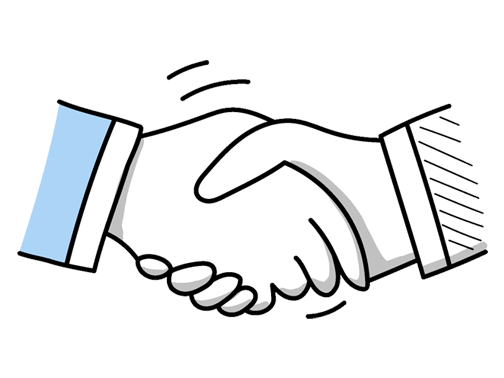Customer Service Trainer Interview Questions (2025 Guide)
Find out common Customer Service Trainer questions, how to answer, and tips for your next job interview
Practice Interviews Online - Identify your strengths and weakness in a realistic Customer Service Trainer mock interview, under 10 minutes
Practice Now »Customer Service Trainer Interview Questions
Hiring managers ask this question to see how you identify problems and use training to create tangible improvements. You need to explain the problem you spotted, how your training targeted that issue, and the positive results that followed.
Example: In a previous role, I noticed response times were slowing due to inconsistent handling of common queries. I designed interactive workshops focusing on practical scenarios and active listening skills. After the sessions, we saw a 20% quicker resolution rate and improved customer satisfaction scores, showing how tailored training can streamline service and boost team confidence.
This interview question checks if you understand and can apply the company’s customer service standards in your training. You need to explain how you use company policies to guide your sessions, customize scenarios to match real situations, and measure success with feedback tools.
Example: When preparing training, I start by immersing myself in the company's customer service values to ensure every session reflects them clearly. I tailor examples and role-plays that mirror real situations staff face, helping them connect theory with practice. After training, I gather feedback and review customer satisfaction metrics to see if the team is meeting our service goals, adjusting the approach as needed to keep everything aligned.
Interviewers want to see how you make training effective and memorable. You should explain that you use clear, simple language and engage trainees with interactive activities, while regularly checking their understanding through follow-up questions.
Example: I focus on making the material relatable and easy to follow, often using real-life scenarios to bring concepts to life. Keeping sessions interactive helps—encouraging questions and group activities keeps energy up and reinforces learning. I also pause regularly to check understanding, sometimes using quick quizzes or discussions, ensuring everyone feels confident before moving on. This approach helps information stick and builds a supportive learning environment.
Employers ask this question to see how you identify problems and apply creativity to improve results. You need to describe a specific challenge you faced, explain your innovative solution, and share the positive impact it had on the training program.
Example: In a previous role, I noticed trainees struggled to retain product knowledge during lengthy sessions. To tackle this, I introduced interactive quizzes and role-playing scenarios throughout the training. This hands-on approach made learning more engaging and practical. As a result, participant feedback improved significantly, and post-training assessments showed a 25% increase in knowledge retention, which really boosted their confidence on the floor.
Employers ask this to see if you can effectively tailor your communication to diverse learners, ensuring everyone understands and benefits. You need to explain how you assess trainee needs, adjust your language or tone accordingly, and share a positive result like increased engagement or comprehension.
Example: In my previous role, I worked with trainees from diverse backgrounds—some preferred detailed step-by-step guidance, while others responded better to big-picture concepts. I would adjust my tone and examples accordingly, ensuring everyone stayed engaged and understood the material. This flexibility helped build confidence across the group, and feedback consistently reflected improved performance and enthusiasm for the training sessions.
What they want to know is how you stay attentive to challenges during training and adapt quickly to ensure learning continues smoothly. You need to explain the problem you noticed, the steps you took to fix it, and the positive result that followed.
Example: During a training session, I noticed participants struggling with a new software feature. I paused to clarify the step-by-step process, then shared a simple example related to their daily tasks. This shift easily re-engaged everyone, and feedback showed they felt more confident using the tool afterwards. It reminded me how adapting on the spot can turn confusion into understanding.
Interviewers ask this question to see if you understand what makes customer service effective and how you can maintain high standards. You need to explain that excellent customer service involves recognizing and anticipating customer needs, consistently delivering professional and quality support, and using feedback to constantly improve the service experience.
Example: Excellent customer service starts with truly listening to what customers want and tailoring our approach to meet those needs. Consistency matters too—delivering reliable, friendly support every time builds trust. I also believe in learning from feedback, whether positive or critical, to keep improving. For example, after gathering feedback, I once adjusted training materials which helped the team handle queries more effectively and boosted customer satisfaction.
This question helps assess your knowledge of key performance indicators that measure customer service quality and your ability to use data to drive improvements. You need to mention metrics like CSAT and NPS, explain how you analyze them to identify training gaps or process issues, and give an example of using these insights to develop or adjust a training program.
Example: When measuring customer service performance, I focus on metrics like customer satisfaction scores, first response times, and resolution rates. These help identify where the team excels or needs support. In training, I use these insights to tailor coaching—like improving response times through role-playing scenarios. It’s about turning data into actionable steps that empower the team to deliver better service consistently.
Questions like this assess your ability to create interactive and effective learning environments. You need to say you use a mix of interactive activities, real-life examples, and encourage open communication to keep trainees engaged and motivated.
Example: I focus on creating an interactive environment where trainees feel comfortable to share and ask questions. I use real-life scenarios to make the content relatable and encourage group discussions to keep energy levels up. For example, role-playing common customer interactions helps build confidence and keeps everyone involved throughout the session. This approach makes learning more engaging and practical.
Hiring managers ask this to see how you measure success and improve your sessions. You need to say you use feedback, performance metrics, and follow-up assessments to ensure the training meets goals and drives learner improvement.
Example: I usually gauge a session’s success by observing how confidently participants apply what they've learned in real situations. I also encourage feedback, whether through quick surveys or informal chats, to understand what worked and what could improve. For example, after a recent workshop, one team member shared how the new conflict resolution techniques helped them de-escalate a tough call, which is a great sign the training made a real difference.
Interviewers ask this to see how you ensure trainees have the necessary technical skills for their role. You need to say that you use a mix of hands-on exercises and quizzes to evaluate understanding and adjust your training accordingly.
Example: I usually combine practical exercises with real-life scenarios to gauge their technical understanding. For example, I might have trainees navigate the CRM system while explaining their steps, which reveals both skill and confidence. I also encourage questions throughout, creating a comfortable space for them to clarify doubts. Observing how they apply these skills in role-plays helps me identify areas needing extra support.
This question assesses your ability to convey information clearly, which is essential for effective training and learner understanding. You need to say that you use simple language, check for understanding frequently, and adapt your communication style to suit different learners.
Example: To ensure clear communication, I focus on breaking down complex ideas into simple, relatable terms and encourage questions throughout the session. I also use real-life examples to make concepts memorable. For instance, when training new staff, I share stories from my own experience to highlight key points, keeping the atmosphere open and interactive so everyone feels comfortable engaging and understanding fully.
What they want to know is whether you actively keep up with new tools and methods to improve training effectiveness. You should say you regularly follow industry blogs and attend webinars to learn new technologies and share an example of how you’ve incorporated these tools into your training sessions.
Example: I stay current by regularly reading industry blogs, attending webinars, and joining professional networks focused on training innovations. I’m always keen to experiment with new tools—like recently integrating interactive video platforms into sessions, which boosted learner engagement. Keeping a curious mindset helps me adapt quickly and ensures my training methods remain relevant and effective.
This question aims to assess your ability to adapt training methods to diverse learning styles and needs, ensuring effective knowledge transfer. You need to explain a specific instance where you identified different learner needs and tailored your approach accordingly to achieve successful outcomes.
Example: In my previous role, I noticed that some learners preferred hands-on activities while others absorbed information better through discussion. So, I adapted sessions by blending practical exercises with group conversations. For example, during a product training, I used role-plays for kinesthetic learners and Q&A for those who liked to reflect verbally. This approach helped everyone stay engaged and improved overall retention.
Employers ask this question to see how well you adapt and manage problems under pressure, ensuring the training remains effective. You need to explain how you quickly assess the issue, adjust your plan, communicate clearly with participants, and resolve the challenge efficiently.
Example: When unexpected issues arise during training, I stay calm and quickly assess the situation to understand the impact. I ask questions to clarify the problem and involve the group when appropriate, keeping communication clear and open. For example, if tech glitches occur, I pivot to discussion or role-play exercises to keep momentum going while resolving the issue behind the scenes. This approach helps maintain engagement and keeps the session productive.
Interviewers ask this question to understand your hands-on experience with LMS platforms and how you use them to enhance training effectiveness. You should explain how you managed training content and user access, solved technical issues for learners, and tailored LMS features to improve the training experience.
Example: In my previous role, I regularly used LMS platforms to organize training materials and monitor how team members were progressing. When users faced issues, I would troubleshoot quickly, often guiding them through common problems like login difficulties or content access. I also customized certain features to make learning more interactive, which helped boost engagement and made the training more relevant for our customer service team’s daily challenges.
This interview question aims to assess your ability to evaluate trainees' learning needs and adapt your training approach effectively. You need to explain that you observe performance, gather feedback, and use assessments to identify gaps, then tailor your coaching to address those specific areas.
Example: When I notice gaps, I start by observing trainees during real interactions and asking open questions to understand their thinking. Then, I tailor support—whether through one-on-one coaching or practical exercises—to build confidence and skills. For example, if someone struggles with handling complaints, I might role-play scenarios to help them practice responses in a safe environment. It’s about creating a comfortable space to learn and grow.
Employers ask this to assess your openness to feedback and your ability to improve your training approach. You need to say that you actively listen to trainees’ feedback, reflect on it objectively, and make adjustments to enhance the learning experience.
Example: When trainees share feedback, I listen carefully and see it as a chance to improve. For example, if they find a session too fast-paced, I adjust the pace or add extra examples. I value their insights because it helps me make the training more engaging and effective for everyone. Being open to feedback creates a positive learning environment where everyone feels heard.
This interview question helps the interviewer understand your ability to create effective training that improves skills and outcomes. You need to explain the training’s goals, how you designed and delivered it, and share clear results or feedback showing its success.
Example: In my previous role, I developed a customer service training focused on improving communication and problem-solving skills. I began by gathering team feedback to tailor the content, then delivered interactive sessions with real-life scenarios. After a month, customer satisfaction scores rose by 15%, and participants reported feeling more confident handling difficult situations. This hands-on approach proved really effective in boosting both skills and morale.
Employers ask this to see how you support learners and ensure effective training outcomes. You should explain that you first identify the trainee's specific difficulties by asking questions, then adapt your teaching methods and provide extra support, while regularly monitoring their progress and encouraging improvement.
Example: When someone’s having trouble keeping up, I first try to understand what’s holding them back—whether it’s the pace, the content, or something else. Then, I adjust my approach, maybe breaking topics down differently or offering one-on-one sessions. I keep checking in regularly to track how they’re doing and celebrate small wins, which helps keep them motivated and steadily improving. For example, one trainee improved massively after we spent time tailoring exercises to their learning style.
This interview question assesses your ability to equip employees with skills to manage challenging interactions calmly and effectively. You need to say you teach active listening, empathy, clear communication, and techniques for de-escalation to ensure both customer satisfaction and employee confidence.
Example: When training employees to handle difficult customers, I focus on empathy and active listening. I encourage them to stay calm and acknowledge the customer's feelings, which often diffuses tension. Role-playing real scenarios helps build confidence; for example, practicing how to respond when a customer is upset about a delayed order shows them how to stay professional and solution-focused throughout the conversation.
Interviewers ask this to assess your technical proficiency and ability to design effective training materials. You need to mention specific software tools you’ve used, like PowerPoint or e-learning platforms, and briefly explain how they helped you create engaging content.
Example: In my experience, I’ve worked with tools like PowerPoint and Canva to design engaging presentations, and platforms such as Articulate Storyline for interactive e-learning modules. I also use video editing software like Camtasia to create clear, concise training videos. These tools help me craft materials that are visually appealing and easy to follow, which really supports different learning styles within the team.
Interviewers ask this to see if you use varied teaching tools to engage different learning styles and make training effective. You should explain that you select relevant videos, slides, and interactive tools to enhance understanding and retention in your sessions.
Example: When I design training sessions, I like to mix videos, slides, and real-life role plays to keep things engaging. For example, showing a short customer interaction clip helps illustrate key points, then we practice scenarios together. This variety not only caters to different learning styles but also makes the material feel more relevant and memorable, encouraging active participation throughout the session.
What they want to know is how you simplify complex ideas to ensure clear understanding. You need to say that you break down information into simple steps and use examples or visuals to make it relatable.
Example: When explaining complex ideas, I break them down into simple parts and use relatable examples to make the message clear. I also encourage questions to ensure everyone follows along. For example, when training new hires, I compare technical processes to everyday tasks, which helps make the information more approachable and memorable. It’s all about connecting the dots in a way that feels natural and relevant to the audience.
This interview question assesses your problem-solving skills and your ability to communicate effectively during technical issues. You need to explain that you identify the root cause by asking targeted questions, communicate clearly with everyone involved, and apply quick, practical solutions to keep training on track.
Example: When a tech issue pops up during training, I start by pinpointing what’s causing the problem, whether it’s software, hardware, or connectivity. I stay in close contact with the team and participants to keep everyone informed and manage expectations. Then, I focus on quick, workable fixes—like switching platforms or adjusting the session—so the training can continue smoothly without losing momentum.
Ace your next Customer Service Trainer interview with even more questions and answers
Common Interview Questions To Expect
The interviewer is looking for a brief overview of your background, experience, and skills relevant to the role. Focus on your professional achievements and how they align with the job requirements.
Example: Sure! I have over 5 years of experience in customer service, with a focus on training and development. I have a proven track record of improving customer satisfaction and employee performance through effective training programs. I am excited about the opportunity to bring my skills and experience to your team.
The interviewer is looking for your motivation, passion, and understanding of the role. You can answer by discussing your relevant skills, experience, and how the role aligns with your career goals.
Example: I am interested in this role because I have a strong background in customer service and training. I am passionate about helping others develop their skills and providing excellent service. This role aligns perfectly with my career goals of making a positive impact in the customer service industry.
The interviewer is looking for your long-term career goals and aspirations. You can answer by discussing your desire for growth within the company, further education, or taking on more responsibilities.
Example: In five years, I see myself continuing to grow within the company, possibly taking on a leadership role in the customer service department. I also plan on furthering my education in training and development to enhance my skills in this field. Ultimately, I aim to be a valuable asset to the team and contribute to the success of the organization.
The interviewer is looking for insight into your long-term career aspirations, your motivation, and how this role fits into your overall career plan. Be honest and specific about your goals and how they align with the company's objectives.
Example: My career goal is to continue growing in the field of customer service training, eventually becoming a senior trainer or manager. I am motivated by helping others develop their skills and excel in their roles. I believe that this role at your company will provide me with the opportunity to further my career goals and make a positive impact on the team.
The interviewer is looking for examples of how you have collaborated with others, communicated effectively, and contributed to team success. Be prepared to discuss specific instances and outcomes.
Example: Sure! In my previous role as a Customer Service Trainer, I worked closely with a team of trainers to develop and deliver training programs. We collaborated on creating engaging content, communicated effectively to ensure consistency, and ultimately saw an improvement in customer satisfaction scores as a result of our teamwork. I believe that my ability to work well in a team setting has been a key factor in my success in this role.
Company Research Tips
The company's official website is a goldmine of information. Look for details about the company's history, mission, vision, and values. Pay special attention to the 'About Us', 'Our Team', and 'News' sections. These can provide insights into the company culture, key personnel, and recent developments. For the role of a Customer Service Trainer, understanding the company's customer service philosophy and approach is crucial.
Tip: Look for any specific language or jargon the company uses to describe its services or values. Using similar language during your interview can show that you're a good cultural fit.
Social media platforms like LinkedIn, Facebook, Twitter, and Instagram can provide valuable insights into the company's culture and values. Look at the content they post, how they interact with customers, and what others are saying about them. For a Customer Service Trainer role, pay attention to any posts related to customer service or training initiatives.
Tip: Follow the company on these platforms to stay updated on their latest news and developments. Engage with their posts where appropriate to show your interest.
Understanding the company's position in the market and how they differentiate themselves from their competitors can be very useful. Look at the competitors' websites, their customer service approach, and any recent news or developments. This can give you a broader understanding of the industry and the specific challenges the company might be facing.
Tip: Use this information to demonstrate your industry knowledge during the interview and suggest ways you could help the company stand out from its competitors.
Glassdoor provides insights into the company from an employee's perspective. You can find information about the company culture, salary, benefits, and interview experiences. For a Customer Service Trainer role, look for reviews from customer service employees to get a sense of the current training practices and areas for improvement.
Tip: Take the reviews with a grain of salt as they can be biased. However, they can still provide valuable insights and potential talking points for your interview.
What to wear to an Customer Service Trainer interview
- Opt for a business casual attire
- A neat, ironed shirt or blouse
- Pair it with formal trousers or a skirt
- Choose dark, neutral colours
- Wear clean, polished shoes
- Avoid flashy jewellery or accessories
- Ensure your clothes fit well
- Keep your hair neat and tidy
- Light makeup for women is acceptable
- Avoid strong perfumes or colognes
- Carry a professional bag or briefcase
- Wear a belt that matches your shoes





